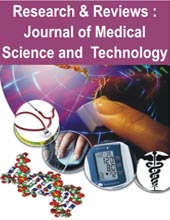
Yong-Chol Hong,

Gyong-Rim Kim,

Jun-Il Kang,

Jong-Hwa Jin,

Ji-Yong Jong,

U-Il Jong1,
- Researcher Pyongyang University of Medical Sciences Ryonhwa Dong Pyongyang
Abstract
We have conducted this study to clarify the changes of the function of interstitial cells of Cajal and fecundity in chronic salpingitis white rat models which are made by infecting its vaginal cavity with Chlamydia. Background: Chlamydial infection is a sexually transmitted disease which is caused by Chlamydia trachomatis. 75% of the fallopian tube disease is thought to be due to anamnesis of asymptomatic Chlamydial infection and those who are under 25 years old with risk of Chlamydial infection and other asymptomatic women are recommended to have a medical examination regularly. Experimentally clarifying the functional and morphological changes of oviduct by chlamydial infection which is the cause of infertility will contribute to establish a new treatment way for diagnosing and treating infertility. We have conducted this study to clarify the changes of the function of interstitial cells of Cajal and fecundity in chronic salpingitis white rat models which are made by infecting its vaginal cavity with Chlamydia. Objects and Methods: We anaesthetized female wistar rats with 160-180g in body weight and injected 1×107/50μL Chlamydia into vaginal cavity of each rat to make chronic salpingitis models. 4 weeks after infection, we let male and female rats copulate and examined the intravaginal content to confirm if there is a sperm or vaginal plug and set this day as the first day of pregnancy. The 8th, 13th, 18th day we assessed the function of interstitial cells of Cajal by amplifying and measuring bioelectric potential with microelectrode on oviduct and assessed fecundity by counting the number of fetuses in uterus and judging life or deaths of fetuses. Results: The function of interstitial cells of Cajal and fecundity in chronic salpingitis white rat models were significantly destroyed compared with those in normal.
Keywords: Chlamydial infection, chronic salpingitis, interstitial cell of Cajal, fecundity, rat model
[This article belongs to Research & Reviews : A Journal of Medical Science and Technology(rrjomst)]
References
- Malhotra M, Sood S, Mukherjee A, Muralidhar S, Bala M. Genital Chlamydia trachomatis: an update. Indian J Med Res. 2013 Sep;138(3):303–16
- Datta SD, Sternberg M, Johnson RE, Berman S, Papp JR, McQuillan G, Weinstock H. Gonorrhea and chlamydia in the United States among persons 14 to 39 years of age, 1999 to 2002. Annals of internal medicine. 2007 Jul 17;147(2):89–96.
- Greer L, Wendel Jr GD. Rapid diagnostic methods in sexually transmitted infections. Infectious disease clinics of North America. 2008 Dec 1;22(4):601–17.
- Sabido M, Hernandez G, Gonzalez V, Valles X, Montoliu A, Figuerola J, Isern V, Viñado B, Figueroa L, Casabona J. Clinic-based evaluation of a rapid point-of-care test for detection of Chlamydia trachomatis in specimens from sex workers in Escuintla, Guatemala. Journal of clinical microbiology. 2009 Feb;47(2):475–6.
- Parish WL, Laumann EO, Cohen MS, Pan S, Zheng H, Hoffman I, Wang T, Ng KH. Population-based study of chlamydial infection in China: a hidden epidemic. Jama. 2003 Mar 12;289(10):1265–73.
- Detels R, Green AM, Klausner JD, Katzenstein D, Gaydos C, Handsfield HH, Pequegnat W, Mayer K, Hartwell TD, Quinn TC. The incidence and correlates of symptomatic and asymptomatic Chlamydia trachomatis and Neisseria gonorrhoeae infections in selected populations in five countries. Sexually transmitted diseases. 2011 Jun;38(6):503.
- Mertz KJ, Levine WC, Mosure DJ, Berman SM, Dorian KJ. Trends in the prevalence of chlamydial infections: the impact of community-wide testing. Sexually transmitted diseases. 1997 Mar 1:169–75.
- Miller WC, Ford CA, Morris M, Handcock MS, Schmitz JL, Hobbs MM, Cohen MS, Harris KM, Udry JR. Prevalence of chlamydial and gonococcal infections among young adults in the United States. Jama. 2004 May 12;291(18):2229–36.
- Zimmerman HL, Potterat JJ, Dukes RL, Muth JB, Zimmerman HP, Fogle JS, Pratts CI. Epidemiologic differences between chlamydia and gonorrhea. American Journal of Public Health. 1990 Nov;80(11):1338–42.
- Navarro C, Jolly A, Nair R, Chen Y. Risk factors for genital chlamydial infection: a review. Canadian Journal of Infectious Diseases and Medical Microbiology. 2002; 13:195–207.

Research & Reviews : A Journal of Medical Science and Technology
| Volume | 13 |
| Issue | 01 |
| Received | December 2, 2023 |
| Accepted | February 2, 2024 |
| Published | April 2, 2024 |

